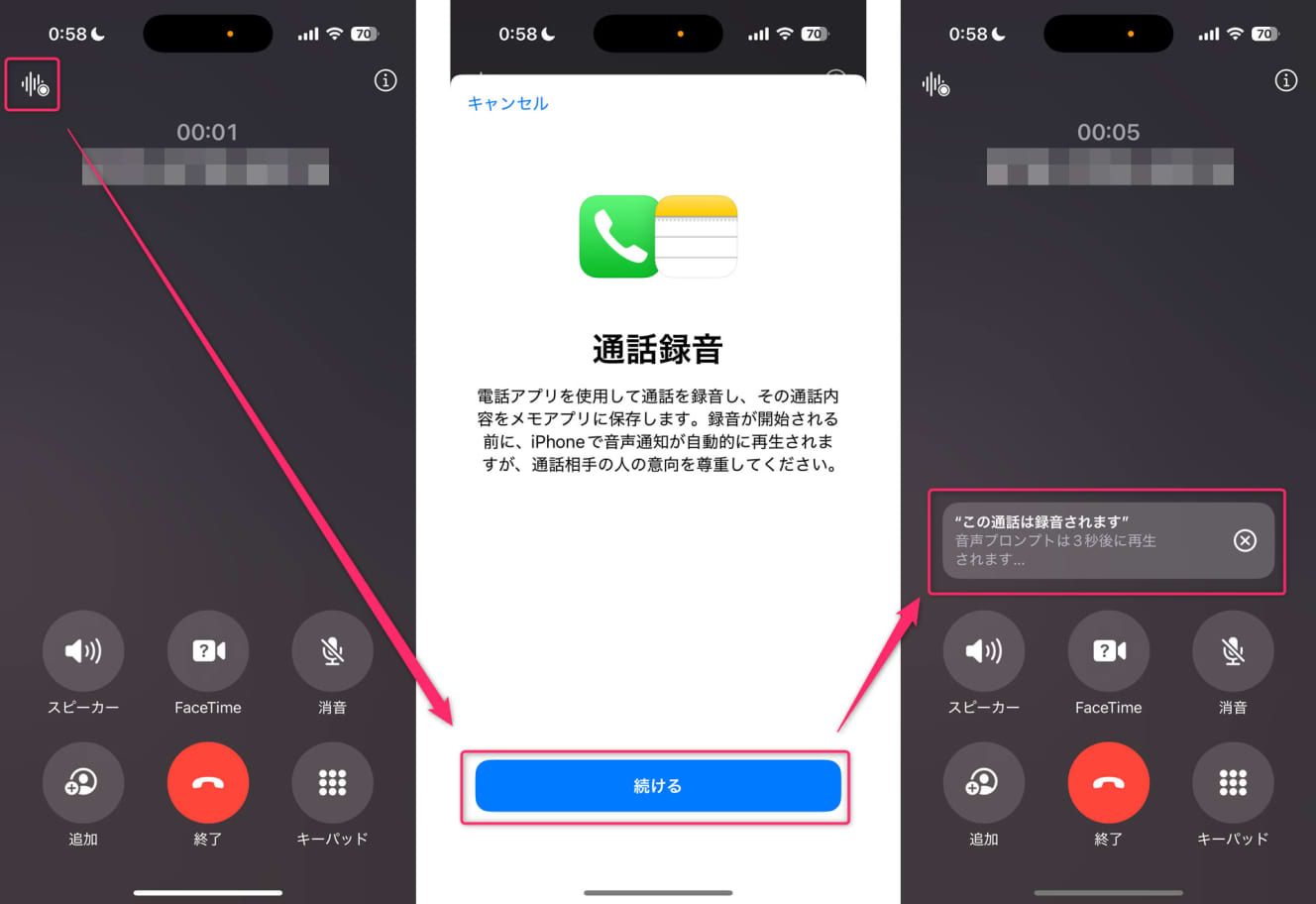2 minutes] Power harassment, fraud prevention… iPhone “call recording” and “live answering machine” strategies.
Finally, it is now possible to do it on the iPhone!
When it comes to smartphones, iPhone and Android are the two choices, but something that Android users have been able to do but iPhone users have not been able to do until now has finally been freed up.
That is the “call recording” function.
Of course, it has always been possible to record calls using third-party apps, but by updating your iPhone to iOS 18.1, you can now record calls as a default feature.

How to use the call recording feature on the iPhone
To use the call recording feature on the iPhone, you must first update your iOS.
Open the Settings application and tap [Settings] > [General] > [Software Update] to perform the iOS update.

After doing so, a record button will appear in the upper left corner of the call screen, and tapping this button will start recording.
The other party will be notified when recording.
Now that this recording function is available, it is generally assumed that it will be used to preserve evidence of what was said or not said. This will be useful when you are on a call with someone who might be in trouble.

However, the iPhone’s call recording feature automatically plays a voice message that says, “This call will be recorded.
Therefore, it is important to note that recording cannot be done without the other party’s knowledge.
Therefore, it may be difficult to use it to collect evidence of sexual harassment or power harassment, but it is expected to have the effect of making the other party less likely to engage in such behavior by automatically telling the other party that he or she will be recorded.
The same effect can be expected against fraud.
It should be difficult to set up a scam against a person who has already taken such precautions. Of course, this is not an absolute guarantee, but since it is free, there is no reason not to use it.
How can I check a recorded call?
The audio files of calls made using the iPhone’s recording function are saved in the “Memo” application. From here, you can play back the recorded audio.

It is thought that using “Apple Intelligence,” which will support Japanese after next March, it will be possible to transcribe directly into text, summarize, and generate tasks.

However, since it does not support Japanese at this time, it is necessary to load the saved audio file into another application if you want to convert it to text.
The “Live Answering Machine” feature will be available in the future. Text Transcription with “Live Voice Mail
Speaking of iPhone call transcription, don’t forget about the “Live Voice Mail” feature. This feature has been available since iOS 17, so you may have already used it.
When you receive a call, you can open the call screen and tap the voicemail button to connect the caller to a live voicemail without having to answer the call.

With the Live Answering Machine feature, what the caller is saying to the answering machine is transcribed on the screen in real time. If the caller has an urgent matter that needs to be handled immediately, the call can be answered as it is, and if it can be handled later, the caller can call back after the matter is finished.
However, this can only be used at the time the call comes in. Usually, you will not notice the call itself, but will notice the answering machine later.
Even in that case, the content of the answering machine is transcribed into text, so you can quickly check the content by reading the text instead of going through the trouble of checking the voice.
Incidentally, with the iPhone, there are many international scam calls these days, but with the answering machine transcription feature, you can quickly determine whether you need to listen to the answering machine or not, because the Chinese language will be displayed.
In any case, being able to read the text without having to confirm the message by voice is a great time saver for many people. If you have not used this feature yet, please update your iPhone and try it.
Text: Shuji Shinohara
Born in 1983. Freelance writer since 2007, specializing in verifying inflammatory incidents and hoaxes mainly on the Internet.